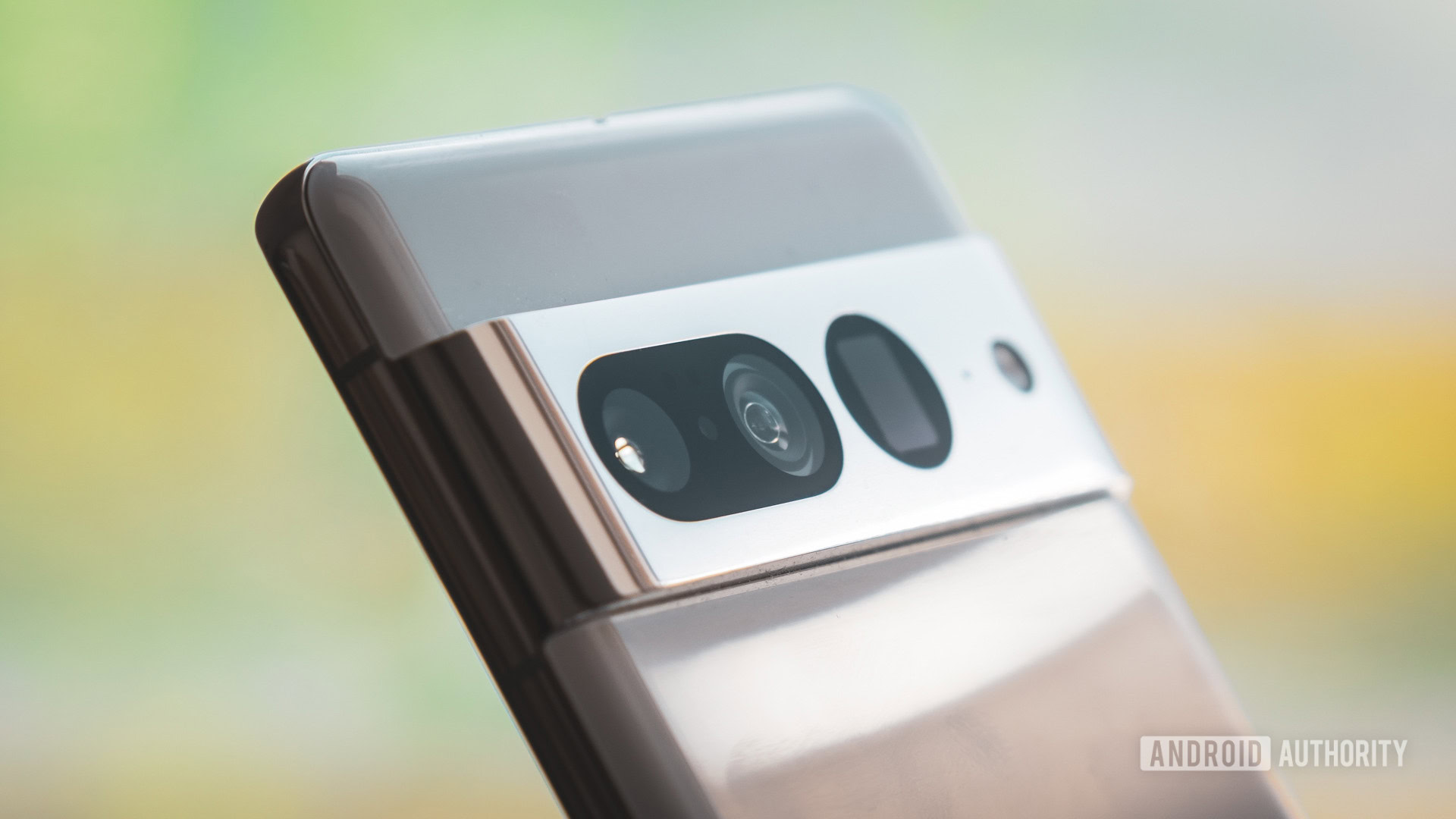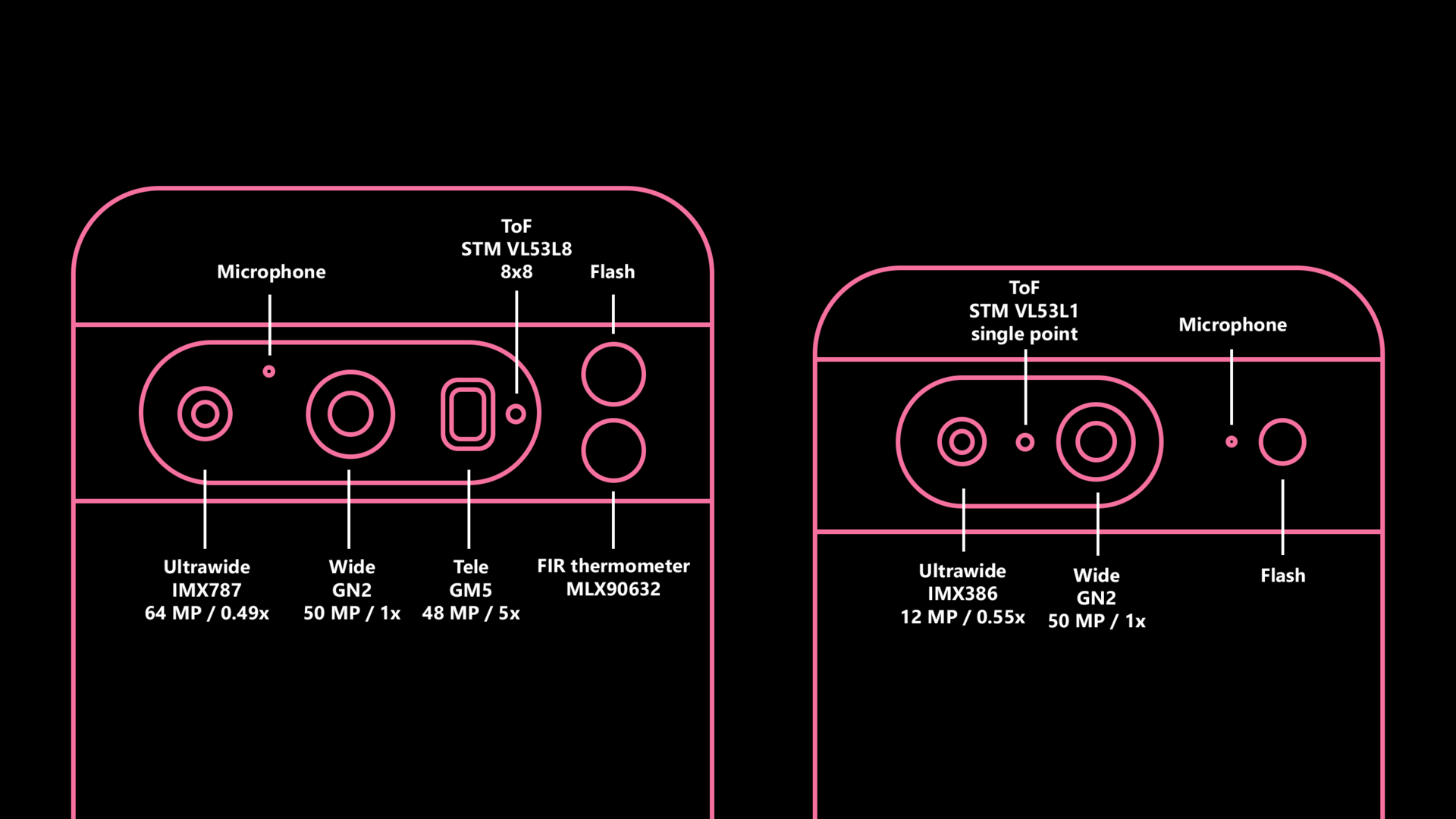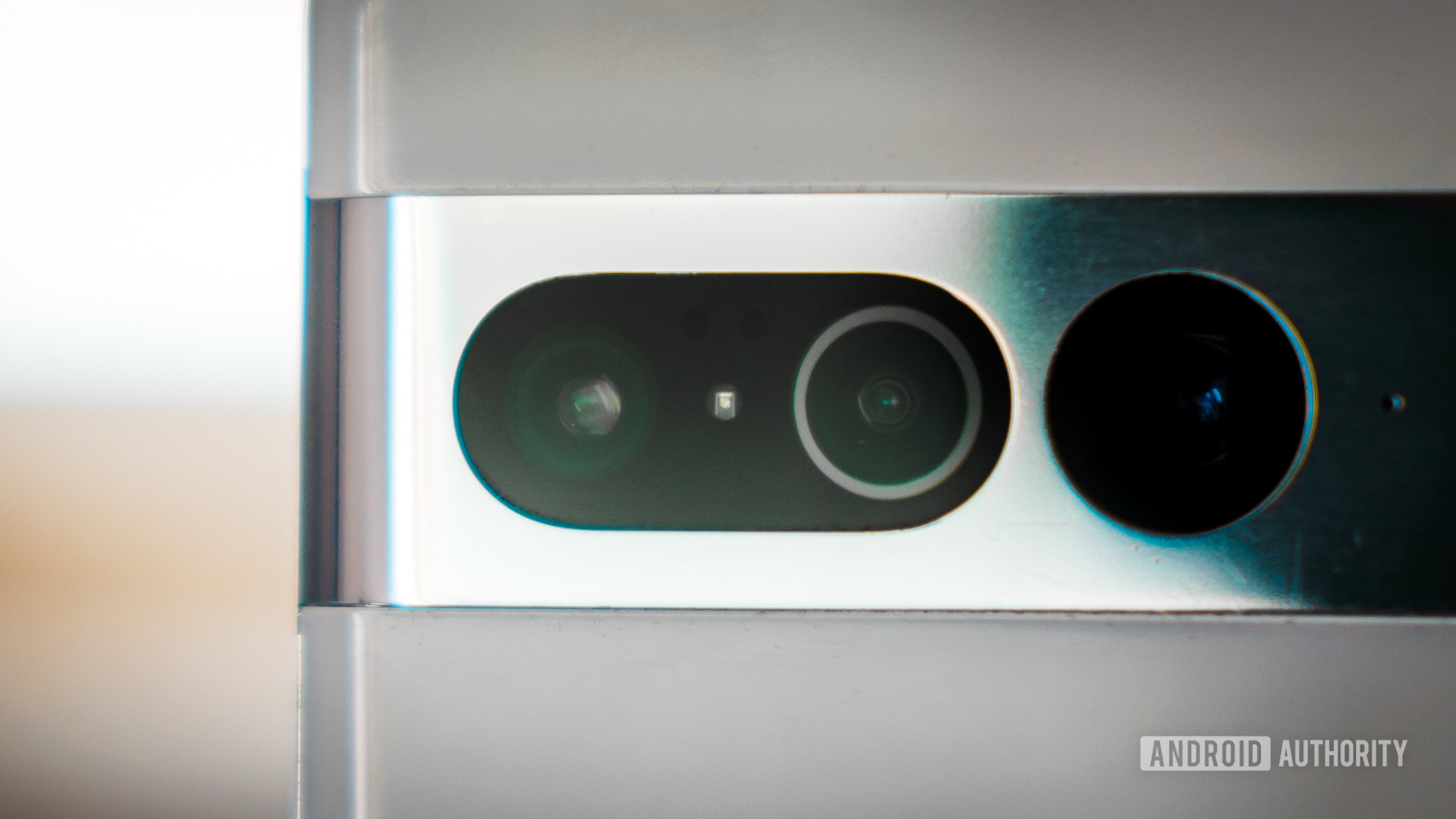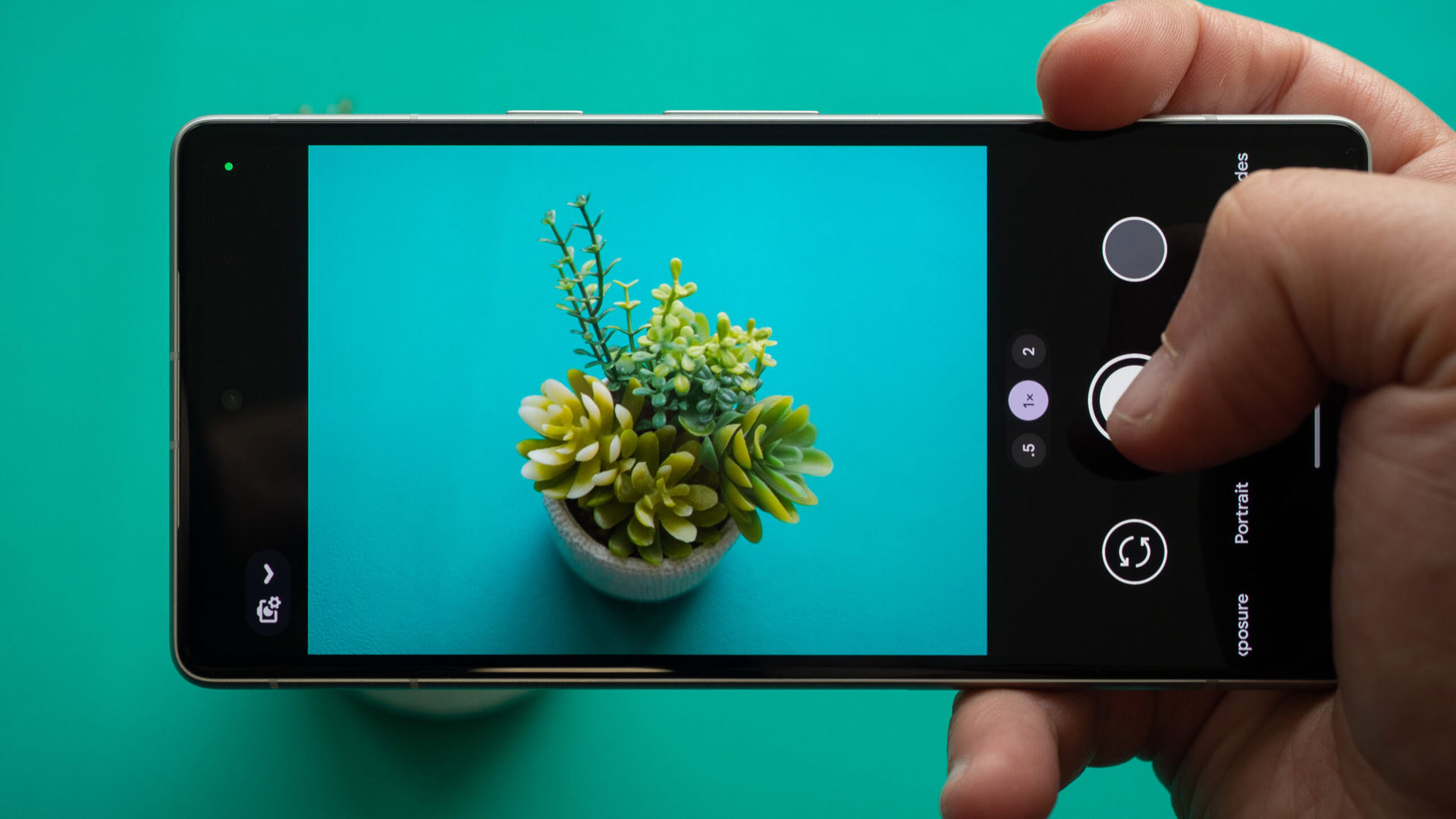Affiliate links on Android Authority may earn us a commission. Learn more.
Exclusive: These are the leaked camera specs for the Google Pixel 8 series

Google Pixels have built a reputation for being excellent camera phones, thanks to investing heavily in computational photography right from the get-go. This was a great move that kept generations of Pixels competitive even though their hardware plateaued after Google stuck with the same primary camera sensor for four years straight. Even last year’s Pixel 6a earned praise from us and others in the camera department, even though it had the same Sony IMX363 image sensor.
The Pixel 6 series saw Google introduce the first major camera hardware upgrades since the Pixel 3. The entire camera setup was upgraded, most noticeably swapping the aging primary sensor for a Samsung ISOCELL GN1. Building on this configuration, the Google Pixel 7 series provided more minor improvements, including a new selfie camera, upgraded telephoto lens, and macro mode on the Pro model. Thanks to a source inside Google, we’ve gained a lot of insight into the camera specs and features of the upcoming Google Pixel 8 series. Let’s delve into the details.
Google Pixel 8 and Pixel 8 Pro camera specs: A considerable hardware upgrade

The main upgrade in the camera hardware this year is coming to both of the Pixel 8 models — the Samsung ISOCELL GN1 sensor makes way for the ISOCELL GN2. This brings a few improvements: first, the sensor is larger and should capture about 35% more light than its predecessor for brighter low-light images and faster shutter speeds to reduce blur.
The sensor also supports 8K/30fps video capture, as does the Tensor G3 processor. However, this might not make its way to users; it’s currently not supported by GCam running on the Pixel 8 and existing Pixels run notoriously hot at 4K/60fps already. The last enhancement is the previously leaked support for Staggered HDR. This reduces the delay between the frames that are captured for HDR to reduce ghosting and speed up the capture process. The technology might push Google’s HDR+ capabilities even further, providing faster, more reliable shots.
A new primary image sensor is just one of several camera improvements coming to the Pixel 8 series.
Google Pixel 8 Pro is also receiving a much-needed upgrade to the ultrawide camera. The dated 12MP Sony IMX386 is replaced by a much more usable 64MP Sony IMX787 — the same sensor as the primary camera found on the Pixel 7a. This is a huge upgrade; the sensor is almost twice the size and should vastly improve the quality of the ultrawide camera. Google has also made the lens slightly wider. While I don’t know the exact field-of-view (FoV), it’s been bumped from a 0.56x zoom ratio to 0.49x. Surprisingly, there’s a chance the macro mode introduced with the Pixel 7 series might be missing this year — as of now, the feature is disabled on the Pixel 8 Pro. The feature may be re-enabled later, or perhaps Google killed it off.
The vanilla Google Pixel 8’s ultrawide camera is also upgraded, although more modestly. While the camera sensor is the same Sony IMX386 found in the Pixel 6 series, Google has made it slightly wider this year. Pixel 7 had a 0.67x zoom ratio, which is now 0.55x in the Pixel 8.
The telephoto camera on Pixel 8 Pro appears to remain the same 5x module as the Pixel 7 Pro. The same goes for the 11MP selfie camera from the Pixel 7 series. Here’s the full rundown:
| Pixel 7 | Pixel 8 | Pixel 8 Pro | Pixel 7 Pro | |
|---|---|---|---|---|
Wide | Pixel 7 Samsung GN1 (50 MP) | Pixel 8 Samsung GN2 (50 MP) | Pixel 8 Pro Samsung GN2 (50 MP) | Pixel 7 Pro Samsung GN1 (50 MP) |
Ultrawide | Pixel 7 Sony IMX386 (12MP) - 0.67x zoom ratio | Pixel 8 Sony IMX386 (12MP) - 0.55x zoom ratio | Pixel 8 Pro Sony IMX787 (64 MP) - 0.49x zoom ratio | Pixel 7 Pro Sony IMX386 (12MP) - 0.56x zoom ratio |
Telephoto | Pixel 7 - | Pixel 8 - | Pixel 8 Pro Samsung GM5 (48 MP) - 5x zoom ratio | Pixel 7 Pro Samsung GM5 (48 MP) - 5x zoom ratio |
Selfie | Pixel 7 Samsung 3J1 (11 MP) | Pixel 8 Samsung 3J1 (11 MP) | Pixel 8 Pro Samsung 3J1 (11 MP) | Pixel 7 Pro Samsung 3J1 (11 MP) |
It’s interesting to see Google further divide the regular Pixels from its Pro equivalents. While previous Pixels in each generation had key differences (e.g. the inclusion of telephoto cameras on the Pro models), it never felt like the regular devices were a major downgrade — they simply had fewer features. With this generation, this is changing. Buying the regular Pixel 8 over the Pixel 8 Pro will now mean weaker zoom and a lower-end ultrawide experience.
Improved time-of-flight is coming to the Pixel 8

It isn’t a very well-known fact, but all Pixel phones since the Pixel 6 (excluding the Pixel A series) have had a single-point time-of-flight (ToF) sensor to aid the autofocus — the STMicroelectronics VL53L1. You can see it in the picture above.
The Pixel 8 Pro finally gets something more useful. The device has a new 8×8 ToF VL53L8 sensor. While having a real LiDAR camera sensor, like the 0.3MP IMX590 in the iPhone 14 Pro, is obviously far more versatile, the new sensor in the Pixel 8 Pro is still a massive upgrade, and it should, at the very least, make the autofocus much more reliable.
The ToF sensor upgrade isn’t coming to the regular Pixel 8; it retains the old VL53L1.
The Pixel 8 thermometer is just a thermometer
Another Pixel 8 Pro feature that has already leaked is an FIR thermometer sensor. Some have speculated that it might be a full thermal camera that could be used for photography purposes too, so let me clear the air: it’s not.
The sensor is a Melexis MLX90632, primarily recommended for high-precision non-contact temperature measurements, including body temperature. It’s not a camera or anything else that could serve any purpose other than measuring temperature. Google simply decided to include a fairly expensive gimmick in its device, and not for the first time (hello, Motion Sense).
Pixel 8 camera software: Improved features are coming

While the camera software on Pixel 8 is obviously in fairly early stages of development and mainly focuses on making the new hardware work, we have spotted some new low-level feature enhancements.
“Adaptive torch” is a new feature that dynamically adjusts the flash intensity based on the scene and other inputs (e.g. which capture mode is used). This should prevent overexposed shots and make low-light photography even better if you use the flash.
Scene segmentation will make an appearance with the Pixel 8.
Another new feature is “Segmentation AWB.” As the name suggests, the scene will be segmented into different parts using AI to then selectively apply different processing to particular parts of the image. This concept isn’t new, Qualcomm announced a similar feature for the Snapdragon 8 Gen 2. It will be interesting to see how Google incorporates this into its existing processing pipelines.
Google might also add a video bokeh blur level selection for the phone’s cinematic mode, which was first introduced on the Google Pixel 7 series.
That’s everything you need to know about the Google Pixel 8 cameras. The upcoming Pixel 8 series is bringing some compelling improvements to the hardware as well as the software, which could make for a nice upgrade over the Pixel 7. It’s going to be interesting to see if the upgrades can put Google up there with the best in mobile photography yet again.